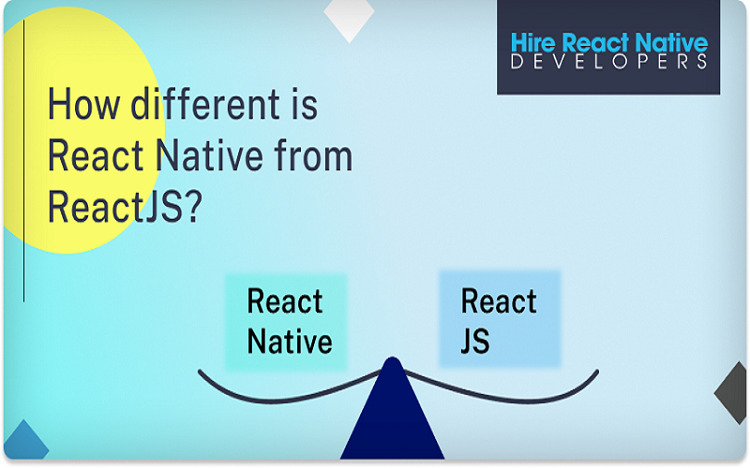Hire React Native Developers
We Provide Best & Dedicated React Native Developers for your Android & iOS app development
The evolution and rapid buildout of the internet have compelled several organizations to bring their brands online and grow their digital presence....

The evolution and rapid buildout of the internet have compelled several organizations to bring their brands online and grow their digital presence. This has been to a greater extent facilitated by the origination and admiration of smartphones and mobile applications. React Native is one of the most popular mobile app development tools available currently. This open-source framework launched by Facebook was solely created for cross-platform mobile application development. Moreover, React Native App Development Services has acutely eased that out, it allows the developers to eliminate the need of going into the app store cycle to acquire any updates. It is the reason why organizations are looking to Hire React Native Developers to provide solutions that are up to the mark.
In due course of time, you’ll be noticing the vital number of benefits of using React Native for mobile app development. Using react native can be diverse in nature and it also ensures that developers are delighted while acquiring unique and innovative programming experiences. We’ve shortlisted some most significant advantages of React Native adored by every development firm.
React Native, per se, is related to ReactJS in a way, However, there are some significant differences you need to know and acknowledge before you start creating your first native application or decide to Hire React Native Developers. In this blog, we’ll be going through the main differences we’ve come across as React Native App Development Services providers who are well versed with React-Native and developed some native apps with this technology.
React Native is referred to as a framework, whereas ReactJS is a javascript library to be utilized for your website. When you initiate a new project integrating ReactJS, in all likelihood will go for a bundler like Webpack and try to fathom which bundling modules to use for your project. Moreover, React Native comes with everything you require and probably wouldn’t need anything more than that. When initiating, you will observe its easy implementation, its swift nature, and the fact that it only takes one command line to execute in the terminal and you will be all set to go. To get going with your app, you will need to have Xcode for iOS, used on Mac only, or Android Studio for Android, deployed on your system.
React Native is not utilizing HTML to render the app, however, it offers substitute components that work in a more alike way. These React Native components depict the genuinely real native iOS or Android UI components that get rendered on the app. Since the respective code is not rendered in an HTML page, this drives that you’ll be not allowed to reoperate any libraries you’ve formerly used with ReactJS that operate any kind of HTML, SVG, or Canvas. Although you’ll be able to find alternative libraries for React-Native, react. parts have a special Native category for you to find everything you need. To polish your React-Native components, you will require to develop stylesheets in Javascript. It somewhat looks like CSS, but it’s not absolutely the same. This can be a little bit baffling at first, but when you understand that React Native is not designed from web elements and can’t be styled similarly. Everything becomes a bit effortless.
When you initiate a new native project, you acquire some of the developer tools due to the divergent thinking from React without any sheer requirement of installing or implementing anything, and that’s pretty awe-inspiring in the client’s opinion. Thereby, Hot Reloading is approachable and is ideal to utilize when you need to make teeny tiny changes to the styles and techniques of your app. The beauty of working with React Native App Development Services Provider is also the immense capability to use and integrate most developer tools you want with ReactJS. Chrome Dev Tools toils elegantly to examine all the network requests, however, you need to cast up a little trick to see the requests, sets forth the console logs, and cease the code on debugger statements. Furthermore, you can even use the substantial Redux DevTools to inspect and review the state of your Redux store.
In a nutshell, React is a framework for creating applications using JavaScript. React Native is an undivided platform empowering you to develop native, cross-platform mobile apps, and React.js is a JavaScript library you utilize for establishing a high-performing UI layer. Furthermore, React.js is the heart and soul of React Native, and it encapsulates all of React’s fundamentals and syntax. so, the learning curve becomes a bit effortless. The platform is what gave reasons for their technical dissimilarities. Bottom line, React is the best option for creating effectual, high-performing, responsive UI for your web interfaces, on the other hand, React Native is meant to provide your mobile apps a truly native look and feel. If any individual or organization is willing to develop mobile applications for more than just one platform, it is best to Hire React Native Developers, to handle every unpredictability that comes with working with new technology.
Suggested:
Why Businesses should choose ReactJS for Web App Development?
10 Mistakes to avoid in React Native App Development.
How React Native 0.69 Will Be Beneficial For The Developers?